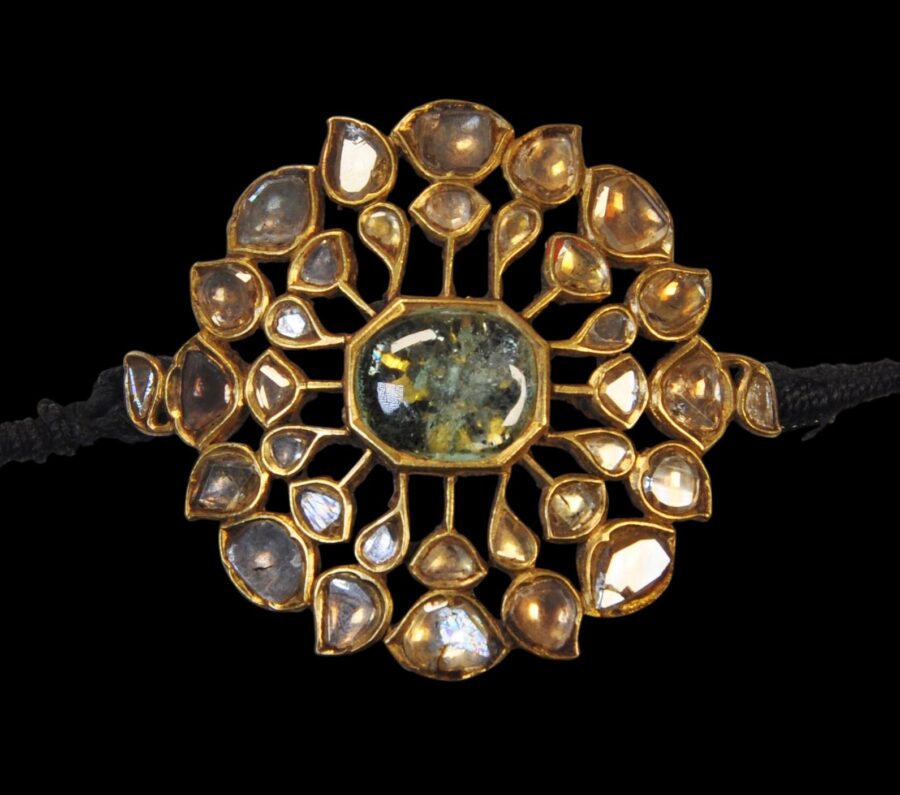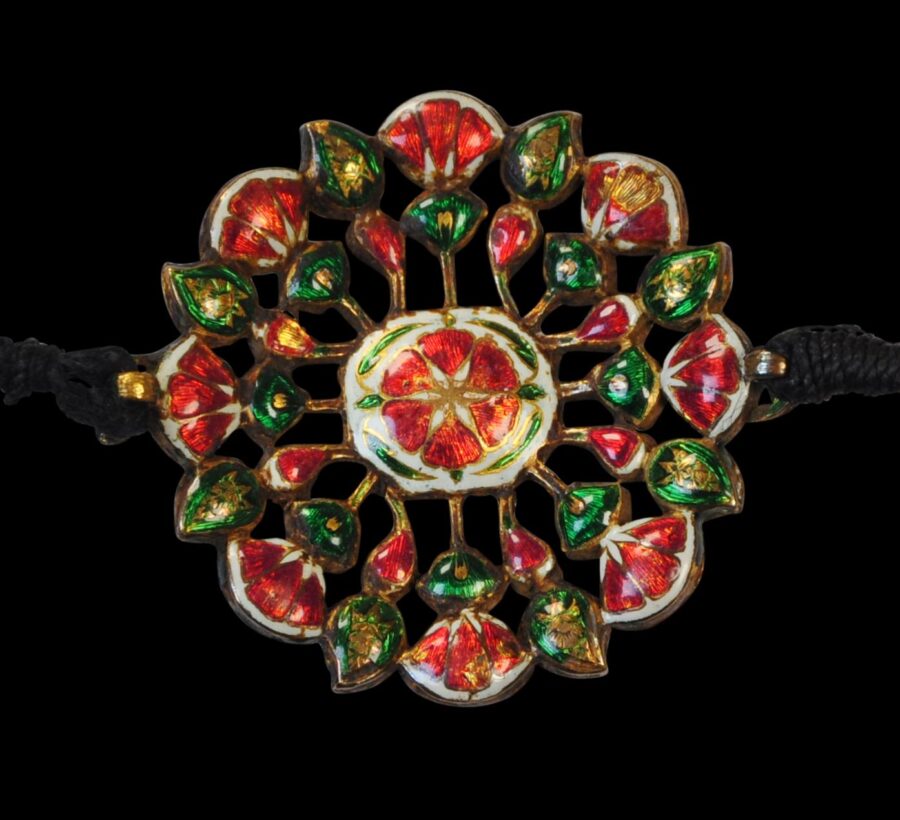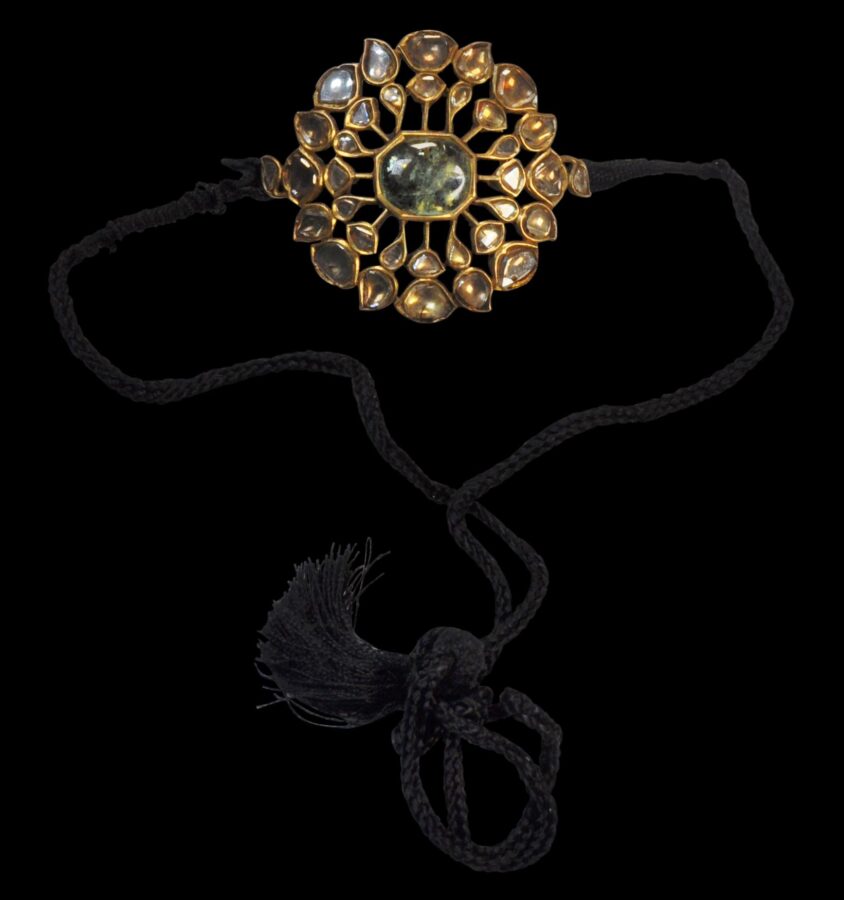Enquiry about object: 9763
Mughal Gold, Diamond & Enamel Bazuband Ornament
Mughal, Northern India 18th century
length: 5cm, width: 4.5cm, weight: 24g
Provenance
private collection, Spain.
Gold Indian jewellery that dates obviously to the 18th century or earlier is comparatively rare. Most examples date to the 19th century.
This diamond-set ornament has a floral, open-work form. Of gold set with 34 flat diamonds in kundan settings around a large central emerald, backed with green foil. The reverse is beautifully and finely decorated with green, red and cream enamel.
It was designed to be worn on the upper arm as a bazuband. It has cords on each side to allow it to be tied to the arm. Originally, bazubands were talismanic devices that contained protective Koranic script and were worn by princes as they went into battle. Some evolved into ornaments to be worn on the upper arm by both men and women. Set with diamonds and other precious stones, they became a typical part of the aristocratic jewellery set worn with courtly costume. (The famous Koh-i-Nor diamond was at one stage set into a bazuband.)
The example here is in fine condition. The enamel work on the reverse is largely intact. The foil backing behind the central stone has deteriorated with age. This is not unusual for an 18th century jewel. Overall, it is a rare example of a jewellery item from 18th century Mughal India.
References
Bala Krishnan, U.R., & M.S. Kumar, Dance of the Peacock: Jewellery Traditions of India, India Book House Ltd, 1999.
Untracht, O., Traditional Jewelry of India, Thames & Hudson, 1997.





